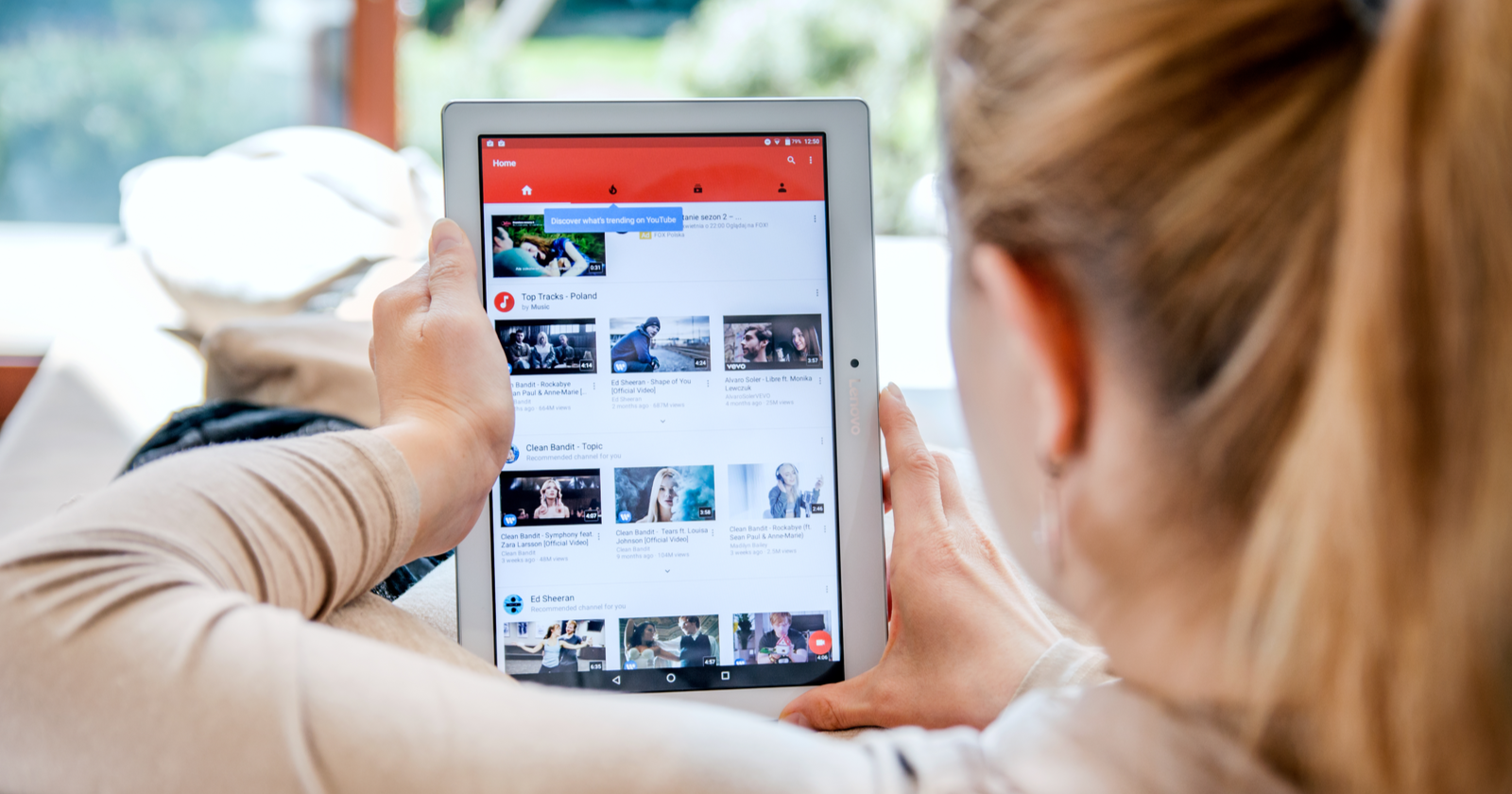Recently, I was in a Zoom meeting with more than 20 content creators from the United Arab Emirates to hear Nuseir Yassin tell “The Story of Nas.”
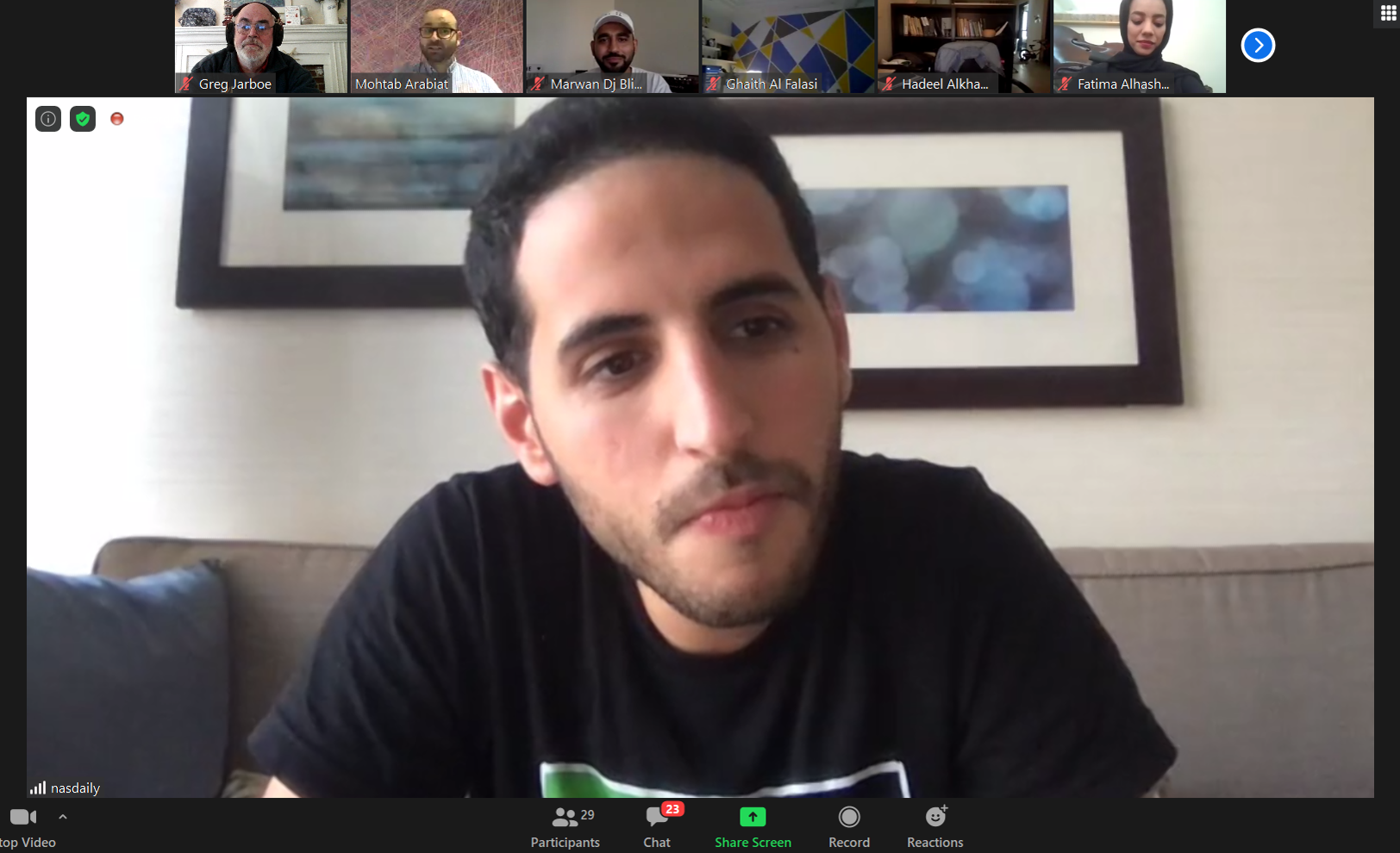
Now, Yassin is an Israeli-Arab video blogger who graduated from Harvard University in 2014.
In 2016, he quit his job at a software company and started to explore the world while video-documenting his travels.
He created a Facebook page named Nas Daily (“Nas” means “people” in Arabic), with the intention of creating a video every day for 1,000 days.
Well, he has now created more than 5,000 videos on his Nas Daily Facebook pages and YouTube channels in a dozen different countries, which have a total of over 6.3 billion views. (That’s billion with a “b”.)
While telling the story of Nas Daily, Yassin shared one of the things that keeps him up at night.
It’s the fear of algorithm changes.
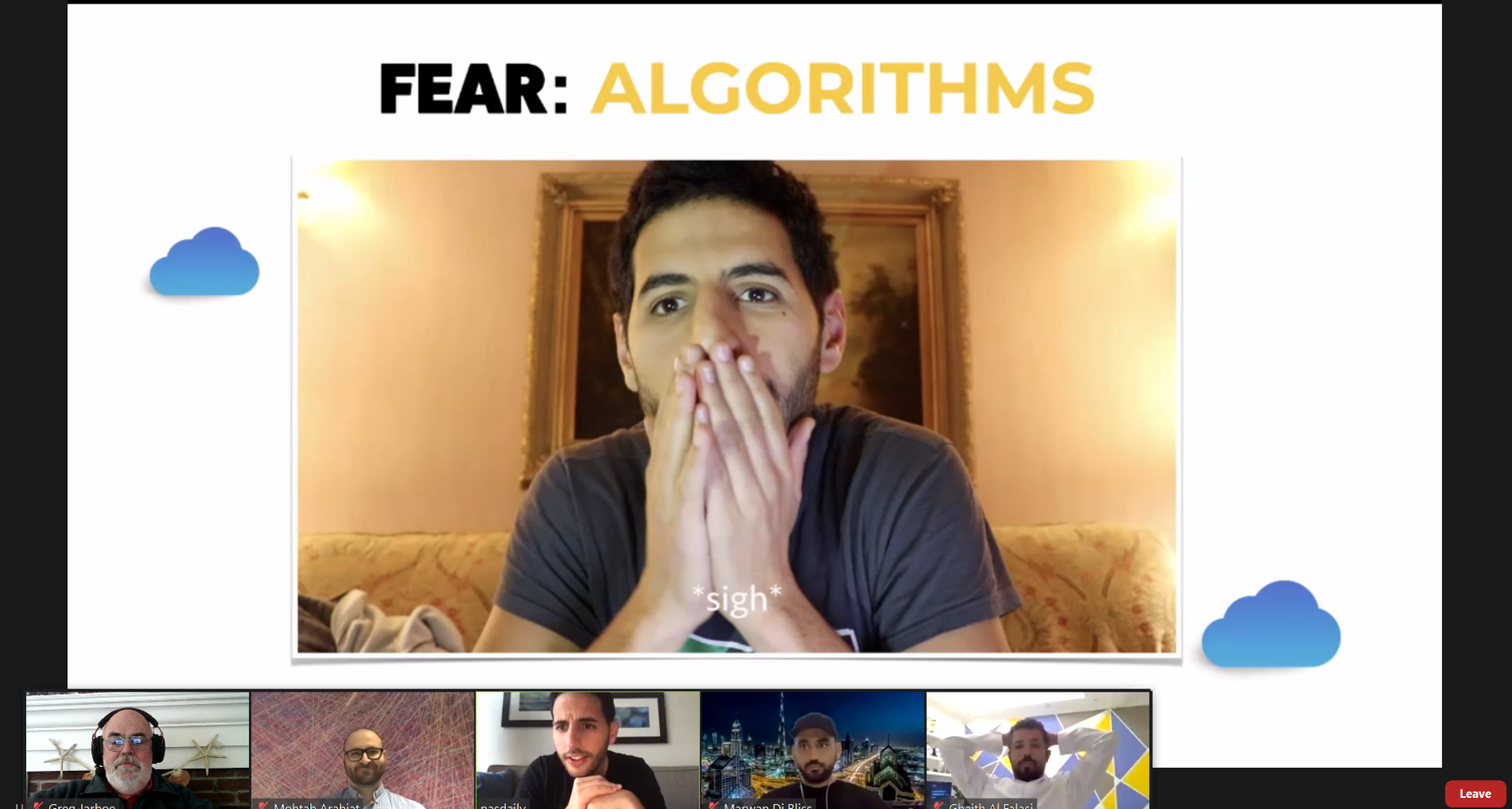
And I suddenly realized that I was totally unprepared in case someone on the Zoom call asked me, “Is YouTube on the brink of updating its algorithm again?”
Now, I am aware of what YouTube told Bloomberg a year ago:
“We make hundreds of changes every year to make it easier for people to find what they want to watch on YouTube. We recently made one such change that improves the ability for users to find quality family content.”
How do I know that?
I read Matt Southern’s article, YouTube Updated its Algorithm in July, Upsetting Many Creators, which was published last August in Search Engine Journal.
And I’ve read Southern’s article, YouTube Changes Rolling Out January 2020 May Impact Creator Revenue, which was published in November 2019.
And I’ve just read Susan Wenograd’s article, YouTube Continues Testing Immersive Product Experiences, which was just published July 11, 2020.
But, I still feel like I have a 180-degree view of what’s going on when I normally have a 360-degree view.
So, immediately after the Zoom call concluded, I tried to figure out why I didn’t have a ready answer in case someone had asked me if YouTube was planning to change its algorithms (plural) anytime soon.
And I figured out why I was in the dark.
What’s Up with YouTube Nowadays?
In 2020, I didn’t attend two tent-pole events in the industry, YouTube Brandcast and VidCon, that I normally attend every year.
Now, I haven’t been goofing off.
Both major events had been canceled because of the global Coronavirus pandemic and I’ve been working from home like most of you.
Yes, I had received a fact sheet about the Brandcast Delivered from the YouTube PR team that gave me the highlights of “the completely reimagined ‘virtual’ event.”
And I duly noted that YouTube had “constructed a ‘personal primetime’ for each attendee based on their passions and shared how YouTube’s deep connection to people’s lives means better results no matter a marketer’s goal – from reach and awareness to action.”
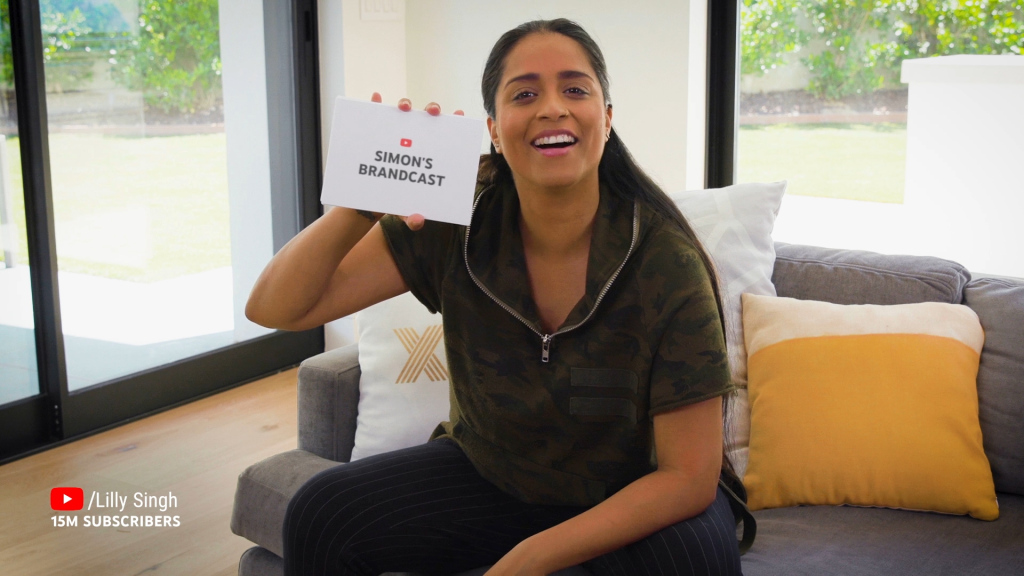
And I also mulled over the potential impact of YouTube Select, “a reimagination and unification of solutions like Google Preferred and prime packs,” on content creators.
It may diversify the number of channels earning six figures per year on YouTube, but YouTube Select was an ad product announcement, not an algorithm change.
And I mulled over the significance of new research presented during Brandcast Delivered that found:
- YouTube viewers say that it is the #1 video platform with “content most personalized to me” (vs TV, OTT, digital).
- Over 85% of users say that YouTube helps them learn new or improve skills they’re interested in learning.
- So far this year, people are watching videos related to recipes and cooking at a rate that’s over 45% higher than the same period last year.
- Heck, the average daily views of videos related to sourdough increased by over 400% from March 15 to May 31, compared to the average from January 1 to March 14, 2020.
- YouTube is ranked the #1 preferred platform among sports fans, higher than cable TV.
- And 70% of Gen Xers say they use YouTube to distract themselves from stress.
There are all interesting facts.
And, yes, one of the reasons that I attended YouTube’s annual Digital Newfront event in previous years was to gather the facts and report the highlights.
But, I had also gathered the gossip, scientific-wild-ass-guesses, strategic insights, and trends that are flying under the radar – over breakfast, lunch, and dinner with “informed sources” as well as during chance conversations while standing in line to get into sessions or at parties later in the evening.
That’s why I felt that I was getting only half the picture.
So, I immediately got on the phone and called a couple of the YouTube gurus and video marketing experts that I normally hang out with at tent-pole events and asked, like Thomas Jefferson in Hamilton, “What’d I miss?”
One of those YouTube gurus is Mark Robertson (MR). He’s is Head of Product/Brand Marketing at vidIQ.
The other video marketing expert was Carla Marshall (CM). She is Head of Marketing at vidIQ.
Now, I’ve known both of them since “watch time” replaced “view count” in the YouTube algorithm back in October 2012.
Oh, and we all worked together at ReelSEO, which later became Tubular Insights. So, this was like getting the old band back together.
Anyway, I hope that you’re as interested in finding out if YouTube on the brink of the verge of the edge of updating its algorithm once again.
I assume that I’m not the only one who wants the strategic insights into what YouTube may be cooking up.
In any event, here are my questions and their answers.
On YouTube’s Changing Algorithms: Q&A
Greg Jarboe (GJ): I’ve been feeling a “disturbance in the Force” as if YouTube has been testing significant changes to its algorithm that will impact millions of content creators.
You’re a YouTube guru. What are you feeling or hearing from your sources?
MR: In my opinion, it’s unlikely that YouTube would deploy huge changes to its algorithms.
To your point, any changes to an algorithm would not be rolled out globally without first running many experiments to validate potential improvements that are core to YouTube’s goals.
Outside of big policy updates like Watch Time in 2012, the response to the “Adpocalypse”, and the new COPPA/FTC rules around “Made for Kids” content, I think that it’d be quite rare for them to have rolled out any significant changes that would impact a majority of creators without first making sure those changes would benefit the viewer.
I believe YouTube is consistently experimenting with various aspects of its algorithm (and when I say algorithm, I’m talking about multiple algorithms of course) and most of these would be small enough experiments that wouldn’t affect the ecosystem as a whole.
As to the disturbances, I would say that I personally do believe there may have been a few noticeable experiments (and perhaps changes) in recent months.
There are a few things that I’ve observed and have corroborated with colleagues (notably Carlos Pacheco of Video Insiders), across channels large and small.
In particular, we have a suspicion that there may have been some “disturbances” around the middle of May, related to Homepage and Suggested/Recommended discovery.
We believe that these potential changes may be tied to an increase in visibility for content originating from channels that do a better job of acquiring and retaining viewers, independent of subscriber activity (and vice versa).
What we believe we’re seeing seems to very much be in line with what we’ve been hearing from YouTube for well over a year now.
So, any new “disturbances” to the algorithm would only reinforce that aim – to satisfy the viewer. I first took note of this when “watch time” was referred to as Quality Watch Time back in April of last year.
More recently, they’ve been stressing “viewer satisfaction” and there’s a great, recent video from YouTube’s own Creator Insider show that speaks to this.
Additionally, if you’ve watched anything on the platform in the last few months you may have been asked to complete a short survey about the video content on your home page, or if you’re happy with the video you just watched.
YouTube wouldn’t be asking these questions if they didn’t want the answers.
For as long as YouTube has been online, people have and will try to game the system.
YouTube has evolved to counter this approach with a more holistic one.
I believe they’re moving beyond what we understood as “Watch Time” to balance this with newer metrics like acquired viewers, retained viewers, and casual viewers (or churned), along with CTR, engagement, relevance, and others to tell the real story of a video’s impact.
After all, what good would it be for YouTube, if a viewer watched 5 hours of video in one session, only to have a negative experience and not return to YouTube for weeks or months?
It’s important to remember that any change that YouTube makes to the algorithm isn’t to punish creators.
As viewers are becoming more sophisticated in their viewing habits, YouTube knows it must rise to the challenge of keeping them informed and/or entertained with content that is personalized, matches their intent, and leaves them satisfied with their experience.
Satisfying the viewer (vs. the creator) is a win-win-win.
Any enhancements that aim to increase viable viewership on the platform, provide an opportunity to the creator ecosystem as a whole.
I think this a golden opportunity for smaller, authentic channels to break through the noise of more established content factories and it provides a more level playing ground for creators of all sizes, with videos of various lengths.
GJ: There are several elements of the current YouTube algorithm, including watch time, relevance, upload date, and ratings.
Even watch time includes several sub-elements. Which element or sub-element is YouTube most likely to change?
MR: As mentioned, I believe one of the biggest changes, “Quality Watch Time” has already happened without the big fanfare we might normally expect.
This is a hugely important indicator of viewer satisfaction and one I believe YouTube is heavily invested in.
I believe that “Quality Watch Time” is laser-focused on the viewer experience, way beyond the usual signals like subscribing to a channel, or clicking through to a video based on its thumbnail or title.
A channel may have 2M subscribers but if the content leaves viewers (independent of subscribers) “unsatisfied,” then the platform may surface that channel’s content less, despite what we traditionally understand in terms of good “Watch Time”.
I believe that one way this is being measured internally at YouTube is related to a newer metric around viewer retention across a channel. (As an example – did a viewer watch content from a given channel more than once in a given month?)
This would be more related to the content creator as a whole vs. video retention.
Video audience retention is still a very directionally significant report that creators should already be familiar with and is a great marker for a given video’s relevance to the viewer.
I am confident that YouTube will begin to showcase more information within YouTube analytics and creator studio to help content creators double-down on content that does “Satisfy.”
Just last week, Assaf Reifer (a Product Manager at YouTube/Google) posted the following tweet wherein he announces a new report which will show creators, which other videos their audience watched, across YouTube.
Hey YouTube creators, if you want to get to know your audience better, see which topics and formats resonate most, which thumbnail and titles work best, and find new collaboration opportunities… 1/2 #YouTubeStudio #YouTube #YouTubers
— Assaf Reifer (@AssafReifer) July 1, 2020
This is directionally very significant in my opinion and I’m looking forward to seeing this in the coming weeks.
GJ: The novel coronavirus pandemic has impacted the normal back-to-school shopping season, which typically starts in early July and peaks in early August.
This year, YouTube search interest in the term, “back to school”, is still flat as a pancake, according to Google Trends.
What impact do you think trends like this will have on YouTube’s algorithm?
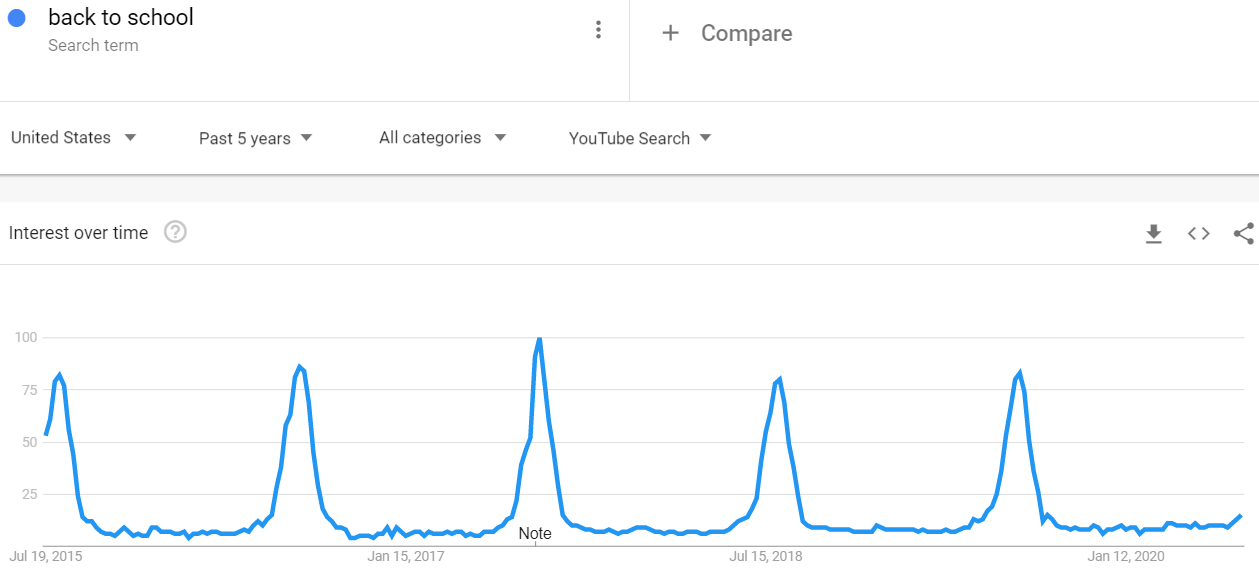
CM: YouTube’s overarching goal is to serve or suggest content that will keep viewers informed or entertained so they stay on the platform as long as possible.
While some trending topics (like back-to-school) have waned in relevance this year, many others have peaked and are driving huge views and engagement for the creators behind them.
YouTube itself has confirmed that views for cooking-related videos have increased 45% since last year.
Now, whether that’s because lockdown has increased organic interest in all things home-cooking during the pandemic (and Google Trends for YouTube certainly suggests a spike for certain food trends over the past few months), or whether YouTube’s algorithm predicted a surge and put this content front and center in suggested and recommended videos, who knows.
While trends like DIY, cooking, crafts and other tutorial-type content have always been popular, it isn’t too much a stretch to suggest that YouTube is making the most of the increased interest brought on by a locked-down world stuck at home and finding things they want to make, learn, or mend.
More Resources:
- YouTube Algorithm: 7 Key Findings You Must Know
- How YouTube Generates & Ranks Suggested Videos
- Google Explains How YouTube Search Works
Image Credits
All screenshots taken by author, July 2020

